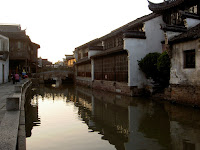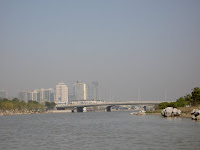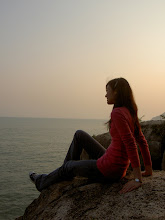 (typical of a rich family)
(typical of a rich family)An hour and a bit's ride away from Suzhou brings me to another old city in Jiangsu province, Wuxi (literally translates into "without tin"). Founded 3,000 years ago, it was known as Youxi ("has tin") due to the tin deposits found there. But eventually the tin began to run out and the name was changed to Wuxi to ward off people from taking the tin. Now tinless, it becaome known for their pearls grown in Taihu (Lake Tai) and an important centre for the silk industry. It's also called "little Shanghai" due to its rapid development in the last century. I don't really have much to say about this city since I spent relatively little time. But just like all the other ancient cities I've visited in China, there is an old side and a new side. The new Wuxi consists of extremely new looking buildings while old Wuxi consisted of parks with the original residences and gardens of ancient rich chinese families preserved.













1. A boat train on the Grand Canal. This was rather interesting! 2. Xihui Park, also known as the "open air musuem" of the history of Wuxi for its cultural relics contained inside. 3. 4. A look inside the park. 5. Inside Jichang garden, you can see the Longguan pagoda, a landmark of Wuxi. The original one from the Ming Dynasty burnt down during the Qing dynasty and the current one is only a replica. 6. 7. 8. 9. Inside the Jichang Garden 10. The "second best spring in the world" dubbed so by a famous tea sampler in the Tang Dynasty. Apparently the quality of water in this spring is the second best in the world. I'm not sure where the best one is. 11. A really old tree, so old that it needs support. 12. Pearls from Taihu! 13. A giant ferris wheel in the city






























